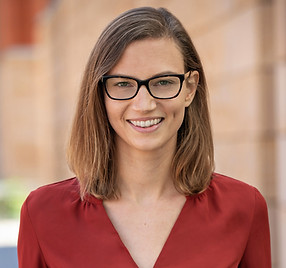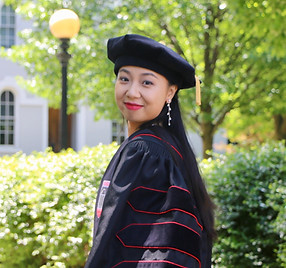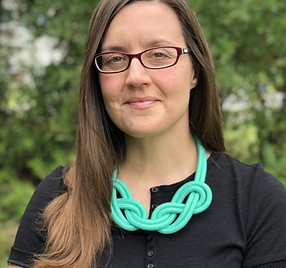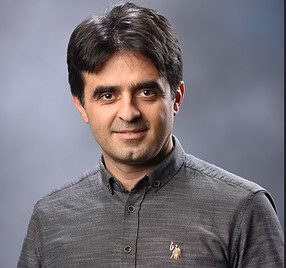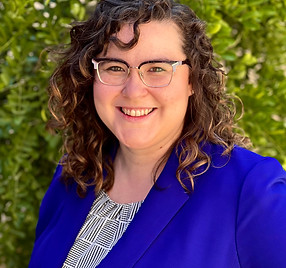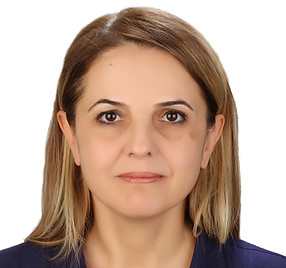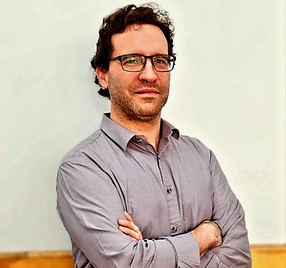3
QR DIRECTORY
Working to construct students' mathematics.
Working to change school mathematics.
Working to honor students' mathematics.
Add or update your directory information HERE.
Dr. Ron Tzur
Professor, University of Colorado Denver
My research and work with teachers focuses on children QR when they construct and use (a) numerical (additive) reasoning about whole numbers, (b) multiplicative reasoning with whole numbers (including place value), and (c) fractional reasoning that could evolve into algebraic reasoning. Aside for studying conceptual progressions in these domains in both children and adults, I have worked with teachers to develop professional understandings of such progressions in their students and using them to guide the teachers' practice, as well as in developing and validating measures of people's reasoning in these domains.
Johnson, H. L., Tzur, R., Gardner, A., Hodkowski , N. M., Lewis, A., & McClintock, E. (2022). A new angle: A teacher’s transformation of mathematics teaching practice and engagement in quantitative reasoning. Research in Mathematics Education, 24(1), 88-108. https://doi.org/10.1080/14794802.2021.1988688
Tzur, R., & Hunt, J. H. (2022). Nurturing fractional reasoning. In Y. P. Xin, R. Tzur, & H. Thouless (Eds.), Enabling mathematics learning of struggling students (1st ed., pp. 315-335). Springer - Nature. https://doi.org/10.1007/978-3-030-95216-7
Tzur, R., Johnson, H. L., Norton, A., Davis, A., Wang, X., Ferrara, M., Harrington, C., & Hodkowski, N. M. (2021). Children’s spontaneous additive strategy relates to multiplicative reasoning. Cognition and Instruction, 39(4), 451-476. https://doi.org/10.1080/07370008.2021.1896521
Dr. Amy B. Ellis
Professor, University of Georgia
I study students' reasoning in algebra, and have developed learning trajectories for students' understanding of linear, quadratic, and exponential growth from a covariation perspective. I draw on contexts with continuously covarying quantities, such as the length and area of sweeping shapes. More recently I have been exploring playful math, examining how to playify these sweeping tasks to support students' covariational reasoning, engagement, and enjoyment.
Ellis, A.B., Lockwood, E., & Çelik, A. (2022). Empirical re-conceptualization: From empirical generalizations to insight and understanding. Journal of Mathematical Behavior, 65. https://doi.org/10.1016/j.jmathb.2021.100928
Ellis, A.B., Ely, R., Tasova, H., & Singleton, B. (2020). Scaling continuous variation: Supporting students’ algebraic reasoning. Educational Studies in Mathematics, 104(1), 87 – 103. https://doi.org/10.1007/s10649-020-09951-6
Ellis, A.B., Ozgur, Z., Kulow, T., Dogan, M.F., & Amidon, J. (2016). An exponential growth learning trajectory: Students’ emerging understanding of exponential growth through covariation. Mathematical Thinking and Learning, 18(3), 151 – 181. https://doi.org/10.1080/10986065.2016.1183090
Dr. Irma Stevens
Assistant Professor, University of Rhode Island
I focus on students' quantitative and covariational reasoning when constructing and interpreting representations. My primary focus is on dynamic geometric situations and associated formulas. My primary population is precalculus and calculus students.
Stevens, I. E. (2022). “A=2πrh is the surface area for a cylinder”: Figurative and operative thought with formulas. In Karunakaran, S. S., & Higgins, A. (Eds.) Proceedings of the 24th Annual Conference on Research in Undergraduate Mathematics Education (pp. 613–621). Boston, MA. READ
Stevens, I. E. (2019). The role of multiplicative objects in a formula. In A. Weinberg, D. Moore-Russo, H. Soto, & M. Wawro (Eds.), Proceedings of the Twenty-Second Annual Conference on Research in Undergraduate Mathematics Education (pp. 273–281). Oklahoma City, OK. READ
Dr. Amy Hackenberg
Professor, Indiana University-Bloomington
I use quantitative reasoning to study how middle school students construct rational number knowledge and algebraic reasoning. For example, I have studied how students construct pairs of quantitative unknowns, conceived of as values of fixed quantities that are not known but could be determined. I have also used quantitative reasoning as a foundation for studying students' construction of reciprocal reasoning and students' construction of ratios in the context of speed. One of my current interests is supporting middle school teachers to appreciate the power of quantitative reasoning as a basis for learning mathematics.
Hackenberg, A. J., Aydeniz-Temizer, F., & Borowski, R. S. (2025). Decentering to support responsive teaching for middle school students. The Journal of Mathematical Behavior, 77, 101205. https://doi.org/10.1016/j.jmathb.2024.101205 PODCAST EPISODE
Hackenberg, A. J., Temizer, F. A., & Borowski, R. (accepted). Middle school students at three stages of units coordination learn to make same speeds. The Journal of Mathematical Behavior, 72, 101085. https://doi.org/10.1016/j.jmathb.2023.101085
Hackenberg, A. J. & Sevinc, S. (2022). Middle school students’ construction of reciprocal reasoning with unknowns. The Journal of Mathematical Behavior, 65, 100929. https://doi.org/10.1016/J.JMATHB.2021.100929
Dr. Marilyn P. Carlson
Professor, Arizona State University
My research has focused on the role of quantitative and covariational reasoning in learning and teaching ideas in calculus and precalculus. I am currently focused on studying interventions for advancing precalculus level teachers’ commitment to quantitative and covariational reasoning as organizing themes for teaching precalculus as a coherent body of ideas. My specific focus is on the role of decentering in advancing precalculus level teachers’ mathematical meanings for teaching specific precalculus ideas. In doing so, I am investigating the role of interventions (e.g., specific conventions for supporting precalculus students’ engagement in quantitative reasoning) in shifting precalculus teachers’ instructional practices toward revealing and advancing students’ thinking and advancing the teachers’ mathematical meanings for teaching specific precalculus ideas.
Carlson, M., Jacobs, S., Coe, E., Larsen, S., & Hsu, E. (2002). Applying covariational reasoning while modeling dynamic events: A framework and a study. Journal for Research in Mathematics Education, 33, 352–378. https://doi.org/10.2307/4149958
Bas-Ader, S. & Carlson, M.P. (2022) Decentering framework: A characterization of graduate student instructors’ actions to understand and act on student thinking, Mathematical Thinking and Learning, 24(2), pp. 99-122. https://doi.org/10.1080/10986065.2020.1844608
Carlson, M.P., O’Bryan, A., Rocha, A. (2022). Instructional Conventions for Conceptualizing, Graphing and Symbolizing Quantitative Relationships. In: Karagöz Akar, G., Zembat, İ.Ö., Arslan, S., Thompson, P.W. (eds) Quantitative Reasoning in Mathematics and Science Education. Mathematics Education in the Digital Era, vol 21. Springer, Cham. https://doi.org/10.1007/978-3-031-14553-7_9
Dr. Michael A. Tallman
Associate Professor, Oklahoma State University
My research focuses on students’ quantitative and covariational reasoning in pre-calculus and calculus at the undergraduate level. I also study the development and enactment of secondary teachers’ mathematical knowledge, including how teachers' awareness of the developmental affordances of quantitative reasoning informs their instructional design and pedagogical actions.
Tallman, M. A., Weaver, J., & Johnson, T. (2024). Developing (pedagogical) content knowledge of constant rate of change: The case of Samantha. The Journal of Mathematical Behavior, 76, 1-27.
Weinberg, A., Corey, D., Tallman, M. A., Martin, J., & Jones, S. (2024). Observing intellectual need and its relationship with students’ learning of calculus. International Journal of Research in Undergraduate Mathematics Education, 10, 1-31.
Reed, Z., Tallman, M. A., & Oehrtman, M. (2023). Assessing productive meanings in calculus. PRIMUS, 33(9), 939-964.
Dr. Pat Thompson
Professor Emeritus, Arizona State University
I consider quantitative reasoning a foundation for learning arithmetic, algebra, trigonometry, probability, statistics, and calculus.
Thompson, P. W. (2022). Quantitative reasoning as an educational lens. In Karagöz Akar, G., Özgür Zembat, I., Selahattin, A., & Thompson, P. W. (Eds.) Quantitative reasoning in mathematics and science education, (pp. 5-20). Zürich: Springer Cham. https://doi.org/10.1007/978-3-031-14553-7_1
Thompson, P.W., Byerley, C., O’Bryan, A. (2024). Figurative and Operative Imagery: Essential Aspects of Reflection in the Development of Schemes and Meanings. In: Dawkins, P.C., Hackenberg, A.J., Norton, A. (eds) Piaget’s Genetic Epistemology for Mathematics Education Research. Research in Mathematics Education. Springer, Cham. https://doi.org/10.1007/978-3-031-47386-9_5
Thompson, P.W. (2025). From a Historical Observation to a Theory of Calculus Education. In: Kitty Yan, X., Mamolo, A., Kontorovich, I. (eds) Where is the Mathematics in Your Math Education Research?. Research in Mathematics Education. Springer, Cham. https://doi.org/10.1007/978-3-031-83907-8_8
Dr. Leslie Steffe
Professor Emeritus, University of Georgia
My research has been focused on constructing second-order models of children’s quantitative reasoning across discrete and continuous quantity in teaching experiments carried out by my former doctoral students and myself. There were four crucial outcomes of this research. The first is that we were able to give meaning to children’s quantitative reasoning using schemes and their operations. The second is that children’s quantitative reasoning occurs within five learning stages where the role of experience in stage transitions remains unknown. The third is that the traditional separation between discrete and continuous quantitative reasoning is counterproductive in that we were able to leverage children’s discrete quantitative reasoning in their construction of continuous quantitative reasoning. The fourth is that continuous quantitative reasoning involves reasoning made possible by the operations that produce three levels of units.
Steffe, L. P. (1991). Operations that generate quantity. Learning and Individual Differences, 3(1), 61-82. https://doi.org/10.1016/1041-6080(91)90004-K
Steffe, L. P. & Olive, J. (2010). Children’s fractional knowledge. New York: Springer. https://doi.org/10.1007/978-1-4419-0591-8
Steffe, L. P., Liss, D. R. II, & Lee, H.Y. (2014). On the operations that generate intensive quantity (pp. 49-79). In Steffe, L. P., Moore, K., & Hatfield, L. (Eds.). Epistemic algebraic students: Emerging models of students’ algebraic knowing papers from an invitational conference. WISDOMe Monograph, Vol 4, University of Wyoming, Laramie. READ
Dr. Halil I. Tasova
Assistant Professor, California State University San Bernardino
My research is centered around understanding how students engage in mathematical thinking and learning, specifically through their reasoning about varying quantities. My work focuses on investigating how students construct and interpret graphs from the perspectives of quantitative and covariational reasoning.
Tasova, H. I., & Moore, K. C. (2025). Middle School Students’ meanings of points From quantitative and covariational reasoning perspectives. Journal for Research in Mathematics Education, 56(5), 233-258. https://doi.org/10.5951/jresematheduc-2023-0178
Tasova, H. I. (2022). Developing meanings for graphs from number lines: The case of Mike. In A. E., Lischka, E. B., Dyer, R. S., Jones, J. N., Lovett, J., Strayer, & S., Drown, (Eds.). Proceedings of the forty-fourth annual meeting of the North American Chapter of the International Group for the Psychology of Mathematics Education (pp. 331–340). Nashville, TN. Middle Tennessee State University. https://doi.org/10.51272/pmena.44.2022
Tasova, H. I., & Moore, K. C. (2020). Framework for representing a multiplicative object in the context of graphing. In A.I. Sacristán, J.C. Cortés-Zavala & P.M. Ruiz-Arias, (Eds.). Mathematics Education Across Cultures: Proceedings of the 42nd Meeting of the North American Chapter of the International Group for the Psychology of Mathematics Education, Mexico (pp. 210–219). Cinvestav/PME-NA. READ
Dr. Biyao Liang
Assistant Professor, The University of Hong Kong
I study students' and teachers' quantitative and covariational reasoning in relation to algebra, geometry, precalculus, and STEM ideas. My recent research investigates how students and teachers construct quantitative and covariational meanings in coding-enhanced mathematics environments. I am also interested in how teachers learn about and learn from student thinking through listening, decentering, and student-teacher interactions, and how they leverage such actions and understandings to support quantitative reasoning.
Liang, B. & Moore, K. C. (2021). Figurative and operative partitioning activity: Students’ meanings for amounts of change in covarying quantities. Mathematical Thinking and Learning, 23(4), 291-317. https://doi.org/10.1080/10986065.2020.1789930
Dr. Teo Paoletti
Associate Professor, University of Delaware
I study student's quantitative and covariational reasoning in the context of coordinate systems, graphs, and related ideas (e.g., systems of equations). My original research focused on pre-service secondary mathematics teachers but my focus has since shifted to supporting middle-school students' covariational reasoning. I am currently exploring ways middle school students can develop their meanings for coordinate systems and graphs that can serve as a foundation for their algebraic reasoning and learning.
Paoletti, T., Gantt, A. L. & Corven, J. (2023). A local instructional theory for middle school students’ emergent reasoning. Journal for Research in Mathematics Education, 54(3). https://doi.org/10.5951/jresematheduc-2021-0066
Paoletti, T., Vishnubhotla, M., & Gantt, A. L. (2022). Reasoning quantitatively and covariationally to develop meanings for systems of relationships. Educational Studies in Mathematics. https://doi.org/10.1007/s10649-021-10134-0
Paoletti, T. (2020). Reasoning about relationships between quantities to reorganize inverse function meanings: The case of Arya. The Journal of Mathematical Behavior, 57, 1-24. https://doi.org/10.1016/j.jmathb.2019.100741
Dr. Hwa Young Lee
Associate Professor, Texas State University
I study students’ mathematical thinking—specifically, students’ constructions of frames of reference, coordinate systems, and graphs—in relation to their spatial and quantitative reasoning. I am also interested in learning how teachers can facilitate and support such mathematical thinking.
Paoletti, T., Lee, H. Y., Rahman, Z., Vishnubhotla, M., & Basu, D. (2020). Comparing graphical representations in mathematics, science, and engineering textbooks and practitioner journals. International Journal of Mathematical Education in Science and Technology. https://doi.org/10.1080/0020739X.2020.1847336
Lee, H. Y. (2020). Tell me where they are. Mathematics Teacher: Learning and Teaching Pre-K-12, 113(11), e78–e84. https://doi.org/10.5951/MTLT.2019.0125
Lee, H. Y., Hardison, H. L., & Paoletti, T. (2020). Foregrounding the Background: Two Uses of Coordinate Systems. For the Learning of Mathematics, 40(2), 32–37. READ
Dr. Hamilton L. Hardison
Assistant Professor, Texas State University
Goals of my scholarship include (a) developing models of students’ mathematical thinking and (b) supporting teachers in using student thinking as the basis for mathematics instruction. My current independent research examines how individuals quantify angularity and how to support productive changes in these quantifications. In work with others, I've investigated students' quantitative reasoning as they construct coordinate systems and engage in mathematical modeling.
Lee, H. Y., Hardison, H. L., & Paoletti, T. (2020). Foregrounding the Background: Two Uses of Coordinate Systems. For the Learning of Mathematics, 40(2), 32–37. READ
Hardison, H. L. (2019). Four attentional motions involved in the construction of angularity. In Proceedings of the 41st Annual Meeting of the North American Chapter of the International Group for the Psychology of Mathematics Education (pp. 360–369). St. Louis, MO: University of Missouri. READ
Hardison, H. L., & Lee, H. Y. (2020). Funky Protractors for Exploring Angle Measure. Mathematics Teacher: Learning and Teaching PK-12, 113(3), 229–232. https://doi.org/10.5951/MTLT.2019.0214
Dr. Steven R. Jones
Associate Professor, Brigham Young University
My main interest has been in helping students productively use mathematical knowledge in other STEM areas outside of their math classes, such as in physics, chemistry, engineering, economics, and so on. Using quantitative reasoning in math classes to construct math concepts, to develop fluency with symbolic expressions, and to model real-world situations is a crucial component of doing so. Most of my work in QR has focused on the calculus topics of integrals and derivatives, but I have also worked with QR in graphs, symbolic equations, ODEs, and trigonometry.
Jones, S. R. (2022). Multivariation and students’ multivariational reasoning. Journal of Mathematical Behavior, 67, article #100991. https://doi.org/10.1016/j.jmathb.2022.100991
Jones, S. R. & Ely, R. (2023). Approaches to integration based on quantitative reasoning: Adding up pieces and accumulation from rate. International Journal of Research in Undergraduate Mathematics Education, 9(1). https://doi.org/10.1007/s40753-022-00203-x
Stevens, B. N. & Jones, S. R. (2023). Learning integrals based on adding up pieces across a unit on integration. International Journal of Research in Undergraduate Mathematics Education, 9(1). https://doi.org/10.1007/s40753-022-00204-w
Dr. Kevin C. Moore
Professor, University of Georgia
My specific interest is understanding how students' and teachers' quantitative and covariational reasoning is a generative foundation for their learning precalculus and calculus concepts. This includes understanding the ways in which we can perturb individuals' meanings in ways that generate intellectual need for quantitative and covariational reasoning. A majority of my research has been situated in the contexts of graphical representations and phenomena, as each provide the figurative material necessary for enacting quantitative operations.
Moore, K. C. (2025). A framework for time and covariational reasoning. The Mathematics Educator, 33(1). READ
Moore, K. C., Liang, B., Stevens, I. E., Tasova, H. I., & Paoletti, T. (2022). Abstracted Quantitative Structures: Using Quantitative Reasoning to Define Concept Construction. In G. Karagöz Akar, İ. Ö. Zembat, S. Arslan, & P. W. Thompson (Eds.), Quantitative Reasoning in Mathematics and Science Education (pp. 35-69). Springer International Publishing. https://doi.org/10.1007/978-3-031-14553-7_3
Moore, K. C. (2021). Graphical shape thinking and transfer. In C. Hohensee & J. Lobato (Eds.), Transfer of learning: Progressive perspectives for mathematics education and related fields (pp. 145-171). Springer. https://doi.org/10.1007/978-3-030-65632-4_7
Dr. Anderson Norton
Professor, Virginia Tech
My research in units coordination relates to quantitative reasoning by identifying units students construct and use to measure quantities. The coordination of units relates closely to measurement, as well as co-variational reasoning. Primarily, I'm interested in the mental actions (and coordinations thereof) that undergird quantitative reasoning, and mathematics in general.
Boyce, S., & Norton, A. (2019). Maddie’s units coordinating across contexts. The Journal of Mathematical Behavior, 55. https://doi.org/10.1016/j.jmathb.2019.03.003
Norton, A. (2022). The Psychology of Mathematics: A Journey of Personal Mathematical Empowerment for Educators and Curious Minds. Routledge. ISBN: 9781032020693
Norton, A., Ulrich, C., & Kerrigan, S. (2023). Unit Transformation Graphs: Modeling the Cognitive Demands of Mathematical Tasks. Journal for Research in Mathematics Education, 54(4). https://doi.org/10.5951/jresematheduc-2021-0031
Dr. Amy Smith
Assistant Professor, Stetson University
My research considers both mathematical teaching and learning. My primary interest is exploring how children quantify and operate with duration as a measurable attribute of their world. More recently, I have investigated how teachers and preservice teachers reflect on and support their students' mathematical understandings.
Smith, A. (accepted). The rules of time: Overgeneralization of clock reading procedures. Colorado Mathematics Teacher.
Smith, A., & Hodkowski, N. M. (2025). The power of why: How a future teacher elicited their students' reasoning as a critical aspect of their instruction. Clinically based teacher education in action: Cases from professional development schools (Eds. Polly, D., Garin, E., & Martin, C.). Information Age Publishing.
Smith, A., & Oslick, M.E. (2024). Fronting the math: Reframing culturally relevant picture books within mathematical context. Supporting Students’ Intellectual Freedom in Schools: The Right to Read (Eds. Hartsfield, D., Hull, S., Kimmel, S., & Whitaker, W.). IGI Global.
Dr. Jesse L. M. Wilkins "Jay"
Professor, Virginia Tech
My research interest associated with units coordination focuses on children's early development of number as it relates to the number sequences. I am also interest in how units coordination is related to children's development of a measurement understanding of fractions.
Wilkins, J. L. M., MacDonald, B. L., & Norton, A. (2022). Construction of subitized units is related to the construction of arithmetic units. Educational Studies in Mathematics, 109(1), 137-154. https://doi.org/10.1007/s10649-021-10076-7
Wilkins, J. L. M., Woodward, D., & Norton, A. (2021). Children’s number sequences as predictors of later mathematical development. Mathematics Education Research Journal, 33(3), 513-540. https://doi.org/10.1007/s13394-020-00317-y
Wilkins, J. L. M., & Norton, A. (2018). Learning progression toward a measurement concept of fractions. International Journal of STEM Education, 5:27. https://doi.org/10.1186/s40594-018-0119-2
Dr. Ayhan Kursat Erbas
Part of my research focuses on students' and teachers' quantitative reasoning and covariational reasoning in mathematical modeling and technology-rich environments.
Canogullari, A., & Erbas, A. K. (2024). Students’ use of dragging modalities in solving proportional problems supported with interactive simulations: a multiple case study with sixth and seventh-grade students. Interactive Learning Environments. https://doi.org/10.1080/10494820.2024.2312943
Kertil, M., Erbas, A. K., & Cetinkaya, B. (2023). Pre-service mathematics teachers’ understanding of rate of change throughout a model development sequence. International Journal of Science and Mathematics Education, 21, 1769–1796. https://doi.org/10.1007/s10763-022-10324-z
Kertil, M., Erbas, A. K., & Cetinkaya, B. (2019). Developing prospective teachers’ covariational reasoning through a model development sequence. Mathematical Thinking and Learning, 21(3), 207-233. https://dx.doi.org/10.1080/10986065.2019.1576001
Dr. Carlos William Castillo-Garsow
Professor, Eastern Washington University
I focus on the cognitive development from students of mathematics to researchers using mathematical modeling as a way of defining and communicating their understanding of the mechanics of a situation. I also study strategies and talk moves for effective mentoring of student-led mathematical modeling projects, with a focus on leveraging student diversity and expertise as a resource.
Castillo-Garsow, C. W. (2022). Challenges in Mentoring Mathematical Biology Model Construction: Quantification and Context. Proceedings of the 24th Annual Conference on Research in Undergraduate Mathematics Education. READ
Castillo-Garsow, C. W., Johnson, H. and Moore, K. (2013). Chunky and smooth images of change. For the learning of mathematics 33(3). READ
Castillo-Garsow, C. W. (2013). The role of multiple modeling perspectives in students' learning of exponential growth. Mathematical Biosciences and Engineering (MBE), 10(5/6), 1437 – 1453. READ
Dr. Mahmut Kertil
Assistant Professor, Marmara University
My research focus is teaching and learning of derivative as rate of change from quantiative reasoning perspective. Moreover, I worked on revising Carlson's covariational reasoning framework using QR.
Kertil, M., Erbaş, A. K., & Çetinkaya, B. (2019). Developing Prospective Teachers’ Covariational Reasoning through a Model Development Sequence. Mathematical Thinking and Learning, 21(3), 207-233. doi.org/10.1080/10986065.2019.1576001
Kertil, M., Erbaş, A.K, & Çetinkaya, B. (2023). Pre-service mathematics teachers’ understanding of rate of change throughout a model development sequence. International Journal of Science and Mathematics Education. https://doi.org/10.1007/s10763-022-10324-z
Kertil, M. (2020). Covariational reasoning of prospective mathematics teachers: How do dynamic animations affect? Turkish Journal of Computer and Mathematics Education, 11(2), 312-342. doi.org/10.16949/turkbilmat.652481
Dr. Heather Lynn Johnson
Professor, University of Colorado Denver
I study secondary and university students’ quantitative and covariational reasoning, to understand how they conceive of relationships between attributes, with a focus on functions and graphs. By “networking” different theories, I design freely available digital tasks to help students (and instructors) to expand their math reasoning. I investigate how instructors and departments transform practices to grow students’ math reasoning, and I use quantitative methods to corroborate findings from qualitative studies.
Johnson, H. L. (2022). An intellectual need for relationships: Engendering students’ quantitative and covariational reasoning. In: Karagöz Akar, G., Zembat, İ.Ö., Arslan, S., Thompson, P.W. (eds) Quantitative reasoning in mathematics and science education. Mathematics Education in the Digital Era, vol 21. Springer, Cham. https://doi.org/10.1007/978-3-031-14553-7_2
Johnson, H. L. (2015) Secondary students’ quantification of ratio and rate: A framework for reasoning about change in covarying quantities. Mathematical Thinking and Learning, 17(1), 64-90. https://doi.org/10.1080/10986065.2015.981946
Johnson, H. L. (2012). Reasoning about variation in the intensity of change in covarying quantities involved in rate of change. Journal of Mathematical Behavior, 31(3), 313-330. https://doi.org/10.1016/j.jmathb.2012.01.001
Dr. Martin Simon
Professor Emeritus, NYU
Working on promoting more advanced units coordination (Stages 2 and 3). Prior work established 11 HLTs for fraction concepts.
Simon, M. A., Kara, M., Placa, N., & Avitzur, A. (2018). Towards an integrated theory of mathematics conceptual learning and instructional design: The Learning Through Activity theoretical framework. The Journal of Mathematical Behavior, 52, 95-112. http://dx.doi.org/10.1016/j.jmathb.2018.04.002
Simon, M. A., Kara, M., Norton, A., & Placa, N. (2018). Fostering construction of a meaning for multiplication that subsumes whole-number and fraction multiplication: A study of the Learning Through Activity Research Program. The Journal of Mathematical Behavior, 52, 151-173. https://doi.org/10.1016/j.jmathb.2018.03.002
Simon, M. A. (2022): Understanding the nature of arithmetical concepts–important content for the education of primary mathematics teachers. Mathematical Thinking and Learning. https://doi.org/10.1080/10986065.2022.2139101
Dr. Joanne Lobato
Professor, San Diego State University
Quantitative reasoning has been a common thread in my research on the transfer of learning, student noticing, and algebraic reasoning. More recently, Dr. John Gruver and I (and our team members) have been involved in a project developing an alternative model of instructional mathematics videos that feature pairs of secondary school students engaged in unscripted dialogue as they face and resolve conceptual challenges. Quantitative reasoning has been a theme in each of the 7 video units that we have filmed (see www.mathtalk.org for a repository of videos and supporting materials).
Lobato, J., Gruver, J., & Foster, M. (2023). Students’ development of mathematical meanings while participating vicariously in conversations between other students in instructional videos. The Journal of Mathematical Behavior, 71. https://doi.org/10.1016/j.jmathb.2023.101068
Lobato, J., Hohensee, C., & Rhodehamel, B. (2013). Students' mathematical noticing. Journal for Research in Mathematics Education, 44(5), 809-850. https://doi.org/10.5951/jresematheduc.44.5.0809
Lobato, J., Walters, C. D., Walker, C., & Voigt, M. (2019). How do learners approach dialogic, on-line mathematics videos?. Digital Experiences in Mathematics Education, 5, 1-35. https://doi.org/10.1007/s40751-018-0043-6
Dr. Alan E. O'Bryan
Lead Instructional Designer and Professional Development Coordinator, Rational Reasoning, LLC
I examine student learning of mathematical ideas and teacher change through the lens of cognitive psychology. In particular, I focus on how individuals conceptualize mathematical expressions and formulas as means of communicating a way of understanding relationships in a mathematical context (such as the link between a conceptualized hierarchy of quantitative relationships and the order of operations used to evaluate a generated formula). My passion is trying to operationalize and translate research on quantitative and covariational reasoning to create curriculum materials and professional development training that helps instructors support students' construction of productive meanings for mathematical ideas.
Carlson, M. P., O’Bryan, A., & Rocha, A. (2023). Instructional Conventions for Conceptualizing, Graphing and Symbolizing Quantitative Relationships. In Quantitative Reasoning in Mathematics and Science Education (pp. 221-259). Cham: Springer International Publishing. https://doi.org/10.1007/978-3-031-14553-7_9
O’Bryan, A. E. (2020). Quantitative reasoning and symbolization activity: Do individuals expect calculations and expressions to have quantitative significance? Proceedings of the 23rd Annual Conference on Research in Undergraduate Mathematics Education, Boston, MA. READ
O'Bryan, A. E. & Carlson, M. P. (2016) Fostering teacher change through increased noticing: Creating authentic opportunities for teachers to reflect on student thinking. In (Eds.) T. Fukawa-Connelly, N. Infante, M. Wawro, and S. Brown, Proceedings of the 19th Annual Conference on Research in Undergraduate Mathematics Education, Pittsburgh, PA. READ
Dr. Ismail Ozgur Zembat
Senior Lecturer, University of Glasgow
I focus on the geometric transformations in the context of quantitative reasoning; also focusing on the specialised content knowledge of mathematics teachers in the context of quantitative reasoning.
Zembat, I. Ö., & Gürhan, S. (2023). Fostering a student's abstraction of the relationship between parallelogram and trapezoid within quadrilateral hierarchy. Investigations in Mathematics Learning. https://doi.org/10.1080/19477503.2023.2209430
Akar, G.K., Zembat, İ. Ö., Arslan, S., & Belin, M. (2023). Geometric transformations through quantitative reasoning. In G. K. Akar, I. O. Zembat, S. Arslan & P. Thompson (Eds.), Quantitative Reasoning in Mathematics and Science Education (Vol.21, pp.199-219). Springer. https://doi.org/10.1007/978-3-031-14553-7_8
Dr. Beth L. MacDonald
Professor in Early Childhood Mathematics Education, Illinois State University
I investigate how young children construct some of their earliest pre-numerical units. To do, this I frame their activity with subitizing and counting literature and couple this with Units Construction and Units Coordination learning theories (Steffe & Cobb, 1988). I also collaborate with scholars in special education to examine how young children identified with a learning disability reorganize their whole number schemes to construct fraction schemes (Steffe, 2002).
MacDonald, B. L., Kroesch, A. M., Bajwa, N. P., Barrett, J., Hunt, J. H., & Tobias, J., (2025). Reorganizing whole number understandings to develop fraction relationships: A case of Dalton and Angela, two Third Grade children with intensive supports in mathematics. Journal of Mathematical Behavior, 77(101212), pp. 1-19.
Wilkins, J.L.M., MacDonald, B.L. & Norton, A. (2022). Construction of subitized units is related to the construction of arithmetic units. Educational Studies in Mathematics. 109, 137–154. https://doi.org/10.1007/s10649-021-10076-7
MacDonald, B. L., Hunt, J. H., Litster, K., Roxburgh, A., & Leitch, M. (2020). Diego’s number understanding development through his subitizing and counting. Investigations in Mathematics Learning, 12(4), pp. 275-288. https://doi.org/10.1080/19477503.2020.1824287
Dr. Abby Rocha
Postdoctoral Research Associate, University of Arizona
My research investigates relationships between teachers’ mathematical meanings and their actions while teaching. My dissertation study examined the relationships between teachers’ mathematical meanings for teaching, their commitment to quantitative reasoning as a critical way of thinking, and their instructional practices, including their actions to decenter. This work has contributed to new theory for improving mathematics teacher development while also contributing pragmatic solutions for designing mathematics teacher preparation courses and professional development seminars for undergraduate mathematics instructors.
Rocha, A. (in press) Characterizing a Teacher’s Ways of Thinking about Teaching the Idea of Sine Function. Proceedings of the Twenty-Fifth Annual Special Interest Group of the Mathematical Association of America Conference on Research in Undergraduate Mathematics Education. Omaha, NE: RUME. READ
Carlson, M., O’Bryan, A.E., Rocha, A. (2023). Instructional Conventions for Conceptualizing, Graphing and Symbolizing Quantitative Relationships. In Quantitative Reasoning in Mathematics and Science Education. Karagöz Akar, G., Özgür Zembat, I., Arslan, S., & Thompson, P. W. (Eds.), Berlin: Springer. https://doi.org/10.1007/978-3-031-14553-7_9
Rocha, A. (2022). The Influence of Graduate Student Instructors’ Mathematical Meanings for Teaching Sine Function on their Enacted Teaching Practices. Proceedings of the Twenty-Fourth Annual Special Interest Group of the Mathematical Association of America Conference on Research in Undergraduate Mathematics Education, pp 472-480. Boston, MA: RUME. READ
Dr. Joseph Antonides
Assistant Professor, Colorado State University
My research focuses on mathematical epistemology and psychology. I am interested in students’ spatial and quantitative reasoning across mathematical domains, with particular interest in multiplicative, geometric measurement, and combinatorial reasoning.
Antonides, J., Norton, A., Battista, M. T., & Zwanch, K. (2025). Spatial structuring and units coordination: Building and illustrating a coordinated theoretical framework. Cognition and Instruction. https://doi.org/10.1080/07370008.2025.2571509
Tillema, E. S., & Antonides, J. (2024). Units coordination, combinatorial reasoning, and the multiplication principle: The case of Ashley, an advanced stage 2 college student. Investigations in Mathematics Learning, 16(3), 243–262. https://doi.org/10.1080/19477503.2024.2319004
Dr. Robert Knurek
Assistant Professor, University of Southern Indiana
I am interested in learning more about how students think about graphs and coordinate systems. For my dissertation, I conducted a qualitative collective case study investigating college algebra students’ graph reasoning and conceptions of coordinate systems as they engaged in digital graphing tasks involving dynamic situations. I plan to use the findings from my study to inform future teaching experiments.
Donovan, C, Johnson, H. L., Knurek, R., Whitmore, K. A., & Bechtold, L. (2024). Validating a measure of graph selection and graph reasoning for dynamic situations. Journal of Mathematical Behavior. https://doi.org/10.1016/j.jmathb.2024.101137
Johnson, H. L., Donovan, C., Knurek, R., Whitmore, K. A., & Bechtold, L. (2024). Proposing and testing a model relating students’ graph selection and graph reasoning for dynamic situations. Educational Studies in Mathematics. https://doi.org/10.1007/s10649-024-10299-4
Dr. Jessica Hunt
Associate Professor, NC State University
My research supports a re-conceptualization of research and instructional practice using practices from both mathematics education and special education such that students with disabilities can build mathematics proficiency. Specifically, I design and test asset based learning environments and interventions, such as game enhanced curriculums, to understand, support, and extend processes of student learning. Mounting empirical evidence across both fields suggests educational disparities these students experience are caused by opportunity gaps that stem from remedial instruction as opposed to instruction that affords students access to their own reasoning from which to build in mathematics proficiency and agency.
Silva, J. M., Hunt, J. H., & Welch-Ptak, J. (2023). From (and for) the Invisible 10%: Including Students With Learning Disabilities in Problem-Based Instruction. Journal for Research in Mathematics Education, 54(4), 260-278. https://doi.org/10.5951/jresematheduc-2020-0117
Hunt, J., & Silva, J. (2020). Emma’s negotiation of number: Implicit intensive intervention. Journal for Research in Mathematics Education, 51(3), 334-360. https://doi.org/10.5951/jresemtheduc-2019-0067
Hunt, J., & Tzur, R. (2017). Where is difference? Processes of mathematical remediation through a constructivist lens. The Journal of Mathematical Behavior, 48, 62-76. https://doi.org/10.1016/j.jmathb.2017.06.007
Dr. Gülseren Karagöz Akar
Associate Professor, Boğaziçi University
The role of quantitative reasoning in the learning of different mathematics and science concepts. The role of QR in pedagogical content knowlegde of teachers, especially its role in the conceptual analysis before, during and after teaching.
Turan, N. & Karagöz Akar, G. (2024). An examination of Japanese curriculum materials through quantitative and covariational reasoning: The treatment of linear functions. Mathematical Thinking and Learning, https://doi.org/10.1080/10986065.2024.2387059
Karagöz Akar, G., Belin, M., Arabacı, N., Imamoglu, Y., & Akoğlu, K. (2024). Teachers’ knowledge of different forms of complex numbers through quantitative reasoning. Mathematical Thinking and Learning, https://doi.org/10.1080/10986065.2024.2378910
Karagöz Akar, G., Zembat, I.O., Arslan, S. & Thomson, P.W. (Eds.) (2022). Quantitative Reasoning in Mathematics and Science Education, Springer. https://doi.org/10.1007/978-3-031-14553-7
Dr. John Gruver
Associate Professor, Michigan Technological University
I have created instructional videos that feature the authentic dialogue of students where QR plays a central role.
Lobato, J., Gruver, J., & Foster, M. (In Press). Students’ development of mathematical meanings while participating vicariously in conversations between other students in instructional videos. The Journal of Mathematical Behavior.
Hawthorne, C. W., & Gruver, J. (In Press). Understanding algebraic expressions through figural patterns. Mathematics Teacher: Learning and Teaching PK-12.
Dr. Lori Burch
Visiting Clinical Assistant Professor of Mathematics Education, Indiana University
I am interested in leveraging quantitative reasoning in the development of algebraic reasoning. Specifically, how can quantitative reasoning support the development of structural reasoning in algebra? Through my research, I am investigating how reasoning quantitatively and combinatorially can problematize teachers' meanings for algebraic identities and properties of operation that are emphasized in secondary algebra instruction.
Burch, L. J. (2023). Investigating two teachers' development of combinatorial meaning for algebraic structure. The Journal of Mathematical Behavior, 70, 101039. https://doi.org/10.1016/j.jmathb.2023.101039
Dr. Darío A. González
Assistant Professor, Universidad Autónoma de Chile
My research examines the role of quantitative and covariational reasoning in making sense of and constructing mathematical models of real-world situations with a focus on preservice mathematics teachers and undergraduate education. Currently, I teach mathematics content and methods courses for elementary preservice teachers.
Guiñez, F., & González, D. (2023). The impact of real-world mathematical modelling problems on students’ beliefs about the nature of mathematics. In G. Greefrath, S. Carreira, & G. A. Stillman (Eds.), Advancing and consolidating research on applications and modelling in mathematics education. New York, NY: Springer. https://doi.org/10.1007/978-3-031-27115-1_6
González, D.A. (2022). Applying quantitative and covariational reasoning to think about systems: The example of climate change. In: Karagöz Akar, G., Zembat, İ.Ö., Arslan, S., Thompson, P.W. (eds) Quantitative Reasoning in Mathematics and Science Education. Mathematics Education in the Digital Era, vol 21. Springer, Cham. https://doi.org/10.1007/978-3-031-14553-7_11
González, D. (2021). The progression of preservice teachers’ covariational reasoning as they model global warming. The Journal of Mathematical Behavior, 62, 1–22. https://doi.org/10.1016/j.jmathb.2021.100859
Dr. Mervenur Belin
Research Assistant, Boğaziçi University
I study pre-service and in-service mathematics teachers’ quantitative and covariational reasoning in algebra and calculus. Specifically, my research studies focused on the contribution of prospective secondary mathematics teachers' quantitative reasoning to their proof comprehension. Currently, my main research focus is to investigate how preservice and in-service mathematics teachers’ level of covariational reasoning affects their knowledge of mathematics in functions (families of functions) and their teaching practices.
Belin, M., İşler-Baykal, İ., & Karagöz Akar, G. (2023). An investigation of two mathematics teachers' covariational reasoning. In P. Drijvers, C. Csapodi, H. Palmer, K. Gosztonyi, & E. Konya (Eds.), Proceedings of the Thirteenth Congress of the European Society for Research in Mathematics Education (CERME13) (pp. 3711-3718). Alfred Renyi Institute of Mathematics and ERME.
Karagöz Akar, G., Zembat, İ. Ö., Arslan, S. & Belin, M. (2022). Revisiting Geometric Transformations through Quantitative Reasoning. In G., Karagöz Akar, İ., Ö., Zembat, S., Arslan & P., W., Thompson (Eds.), Quantitative Reasoning in Mathematics and Science Education, (pp. 199-219). Mathematics Education in the Digital Era, vol. 21. Springer, Cham. https://doi.org/10.1007/978-3-031-14553-7_8
Belin, M., & Karagöz Akar, G. (2020). The effect of quantitative reasoning on prospective mathematics teachers’ proof comprehension: The case of real numbers. The Journal of Mathematical Behavior, 57, 1-21, 100757. https://doi.org/10.1016/j.jmathb.2020.100757


